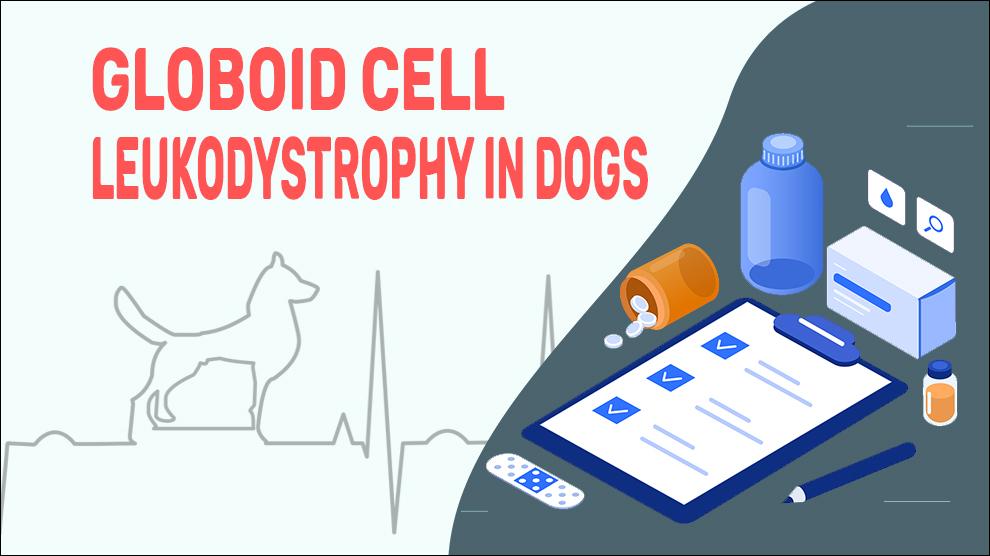What Is Globoid Cell Leukodystrophy In Dogs?
Globoid Cell Leukodystrophy is a progressive and ultimately fatal disease that affects the myelin sheath surrounding nerve cells in dogs.
The myelin sheath is responsible for the efficient transmission of nerve impulses and the maintenance of nerve cells.
In dogs with GLD, the myelin sheath breaks down and is replaced by abnormal cells called globoid cells, leading to severe neurological symptoms.
The disease is caused by a deficiency of the enzyme galactocerebrosidase, which is responsible for breaking down galactosylceramide, a fatty substance found in the myelin sheath.
Without enough galactocerebrosidase, galactosylceramide accumulates, causing inflammation, cell death, and the formation of globoid cells.
The disease can affect dogs of any age, but symptoms usually appear in young dogs between the ages of 3 and 6 months.
The symptoms of GLD are varied and can include muscle weakness, loss of coordination, blindness, deafness, seizures, and behavioral changes.
The severity of the symptoms can vary depending on the age at onset and the breed of the dog.
There is no cure for GLD, and treatment options are limited. Supportive care and medication can help manage symptoms and improve quality of life, but the disease is ultimately fatal.
In some cases, bone marrow transplantation has been attempted with varying success. GLD is most commonly seen in certain breeds of dogs, including West Highland White Terriers, Cairn Terriers, and Beagles, but it can affect any breed.
There is a genetic test available to screen for GLD in dogs, which can help breeders avoid producing affected puppies.
Symptoms Of Globoid Cell Leukodystrophy In Dogs
Treatment Options For Globoid Cell Leukodystrophy In Dogs
There is no cure for Globoid Cell Leukodystrophy (GLD), and treatment options are limited.
Supportive care and medication can help manage symptoms and improve quality of life, but the disease is ultimately fatal.
The treatment plan for dogs with GLD will depend on the severity of their symptoms and the progression of the disease.
Supportive care can include physical therapy, which can help maintain muscle tone and prevent contractures.
Medications such as anticonvulsants can help manage seizures, and pain management medications can help alleviate discomfort.
In some cases, bone marrow transplantation has been attempted with varying success. This treatment involves replacing the dog's bone marrow with healthy bone marrow from a donor.
This can help replace the missing enzyme and slow down the progression of the disease, but it is a risky and expensive procedure with no guarantee of success.
Home Remedies For Globoid Cell Leukodystrophy In Dogs
There are no home remedies that can cure or slow down the progression of GLD. However, supportive care can be provided at home to improve the quality of life for affected dogs.
This can include providing a comfortable environment, monitoring for signs of discomfort, and providing physical therapy exercises.
How To Prevent Globoid Cell Leukodystrophy In Dogs?
Since GLD is a genetic disease, prevention is the key to managing the disease. There is a genetic test available to screen for GLD in dogs, which can help breeders avoid producing affected puppies.
It is recommended that breeding dogs be tested for the disease before breeding to prevent the spread of the disease.
Affected Dog Breeds Of Globoid Cell Leukodystrophy
West Highland White Terrier, Cairn Terrier, Beagle
Causes For Globoid Cell Leukodystrophy In Dogs
Causes:
Globoid Cell Leukodystrophy is a genetic disease caused by a deficiency of the enzyme galactocerebrosidase.
This enzyme is responsible for breaking down a fatty substance called galactosylceramide, which is found in the myelin sheath surrounding nerve cells.
Without enough galactocerebrosidase, galactosylceramide accumulates, leading to inflammation, cell death, and the formation of abnormal cells called globoid cells.
When To See A Vet For Globoid Cell Leukodystrophy In Dogs?
If you suspect that your dog may have GLD, it is important to seek veterinary care immediately.
The earlier the disease is diagnosed, the more effective the treatment can be in managing symptoms and improving quality of life.
Your vet can perform a physical examination and may recommend additional testing, such as blood tests, neurological exams, or imaging studies.
Food Suggestions For Globoid Cell Leukodystrophy In Dogs
There are no specific dietary recommendations for dogs with GLD. However, it is important to provide a balanced and nutritious diet to support overall health and maintain muscle tone.
Your vet can recommend a diet that is appropriate for your dog's age, breed, and health status.
Additionally, some dogs with GLD may have difficulty eating or swallowing, so it may be necessary to adjust their diet or feeding schedule to accommodate their needs.
Conclusion
In conclusion, Globoid cell leukodystrophy is a rare and devastating genetic disease that affects dogs.
While there is no cure for the disease, early diagnosis and supportive care can help to improve the quality of life for affected dogs.
Responsible breeding practices can also help to prevent the spread of the disease in future generations of dogs.

















